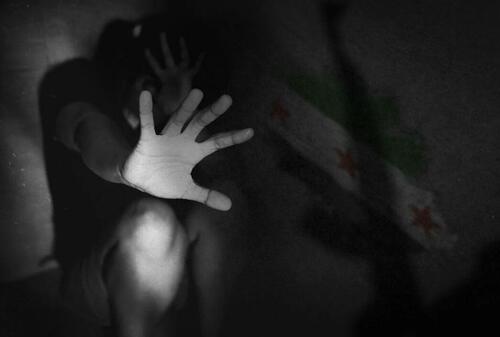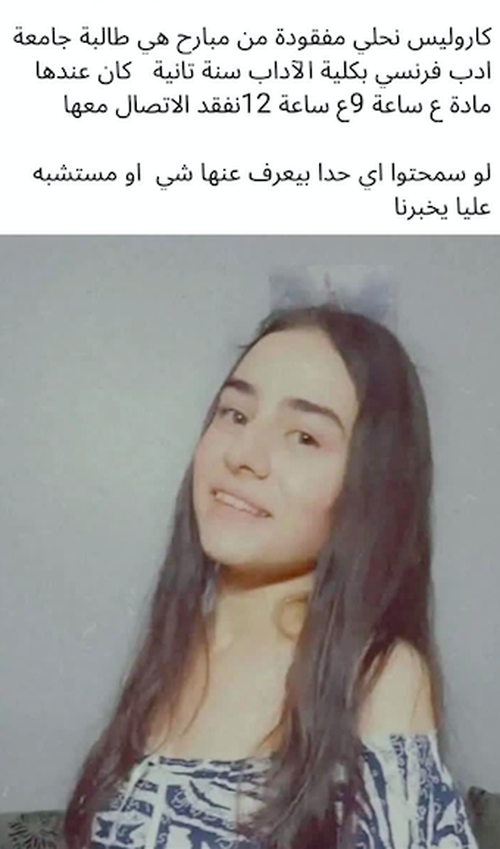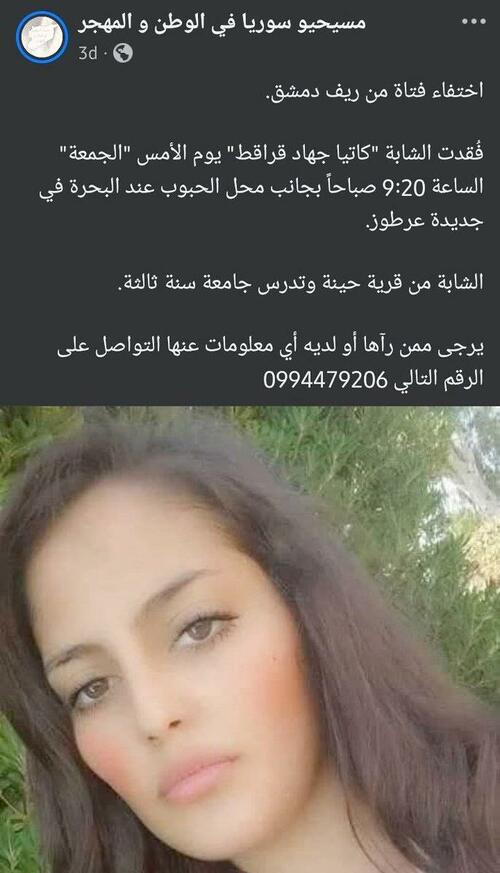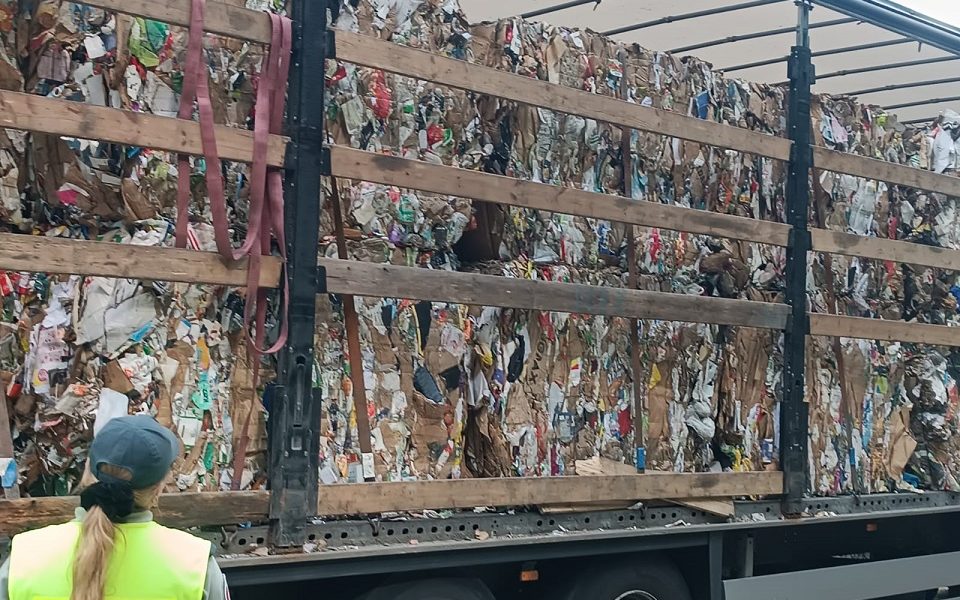
Глобальная тишина, когда HTS и союзники берут алавитских женщин в качестве секс-рабынь в Сирии
Виа Колыбель
С декабря, когда бывший филиал «Аль-Каиды» Хаят Тахрир аш-Шам (HTS) сверг правительство Башара Асада, Сирия стала свидетелем пугающей волны таинственных похищений молодых женщин, преимущественно из алавитской общины.
По-прежнему появляются свидетельства того, что эти женщины, в основном из алавитской религиозной секты, были В провинции Идлиб похищены и увезены жить в качестве секс-рабыньТрадиционный оплот ХТШ, вооруженные группировки, связанные с новым сирийским правительством.
Удивительно, но массовое похищение и порабощение алавитских женщин в настоящее время осуществляется фракциями, связанными с HTS. Отражает порабощение тысяч езидских женщин ИГИЛ Во время геноцида 2014 года в Синджаре, Ирак.

Активист, который высказался
Сирийская активистка из Идлиба Хиба Эззедин описала свою встречу с женщиной, которая, по ее мнению, была захвачена и доставлена в провинцию в качестве секс-рабыни во время волны массовых убийств, проведенных связанными с правительством фракциями и силами безопасности против алавитов в прибрежных районах страны 7 марта.
«Во время моего последнего визита в Идлиб я был в одном месте с моим братом, когда увидел знакомого мне мужчину с женщиной, с которой я никогда раньше не встречался», — сказал он.
"Этот мужчина уже несколько раз был женат и, как считается, в настоящее время имеет трех жен. Что привлекло мое внимание, так это внешность женщины, в частности, было ясно, что она не знает, как правильно носить хиджаб, и ее шарф был задрапирован случайно. "
После дальнейшего расследования Эззедин узнала, что женщина была из прибрежных районов, где 7 марта произошли массовые убийства, в которых было убито более 1600 мирных жителей алавитов. «Этот человек привел ее в деревню и женился на ней, не имея никаких дополнительных подробностей. Никто не знал, что с ней случилось и как она туда попала, и, естественно, молодая женщина слишком боялась говорить.
Поскольку ситуация была настолько странной и тревожной для нее, она начала спрашивать всех, кого она знала, «повстанцев, фракций, правозащитников» о похищении алавитских женщин с побережья. «К сожалению, многие подтвердили, что это действительно произошло, и не только одной фракцией. Основываясь на том, что сказали друзья, обвинения указывают на фракции Национальной армии и некоторых иностранных бойцов, с различными мотивами.
Новые силы безопасности Сирии во главе с HTS включили вооруженные экстремистские группы, в том числе уйгуров из Исламской партии Туркестана (TIP) и сирийских туркменов из фракций поддерживаемой турецкой разведкой Сирийской национальной армии (SNA), в свои ряды с момента прихода к власти в Дамаске.
На руководящие должности в Министерстве обороны Сирии назначены различные командиры СНС и иностранные экстремисты.
В то время как подразделения общей безопасности, в которых доминирует HTS, участвовали в массовых убийствах 7 марта во многих районах, считается, что бывшие группировки SNA и иностранные боевики возглавляли кампанию. Боевики шли от двери к двери в алавитских деревнях и кварталах, казнив всех мужчин военного возраста, которых они могли найти, грабя дома и иногда убивая женщин, детей и пожилых людей..
Эззедин завершила свой пост словами: «Это серьезная проблема, которую нельзя игнорировать. Правительство должно немедленно раскрыть судьбу этих женщин и освободить их;"
Вместо того, чтобы расследовать этот вопрос и попытаться спасти пленных женщин, назначенный HTS губернатор Идлиба выступил с заявлением. приказ об аресте Эззедин, утверждая, что она «оскорбила хиджаб». "
Смелое откровение Эззедина проливает свет на судьбу многих молодых женщин из общин меньшинств, которые таинственным образом исчезли в последние месяцы после того, как самопровозглашенный президент Сирии Ахмад аль-Шараа и ХТШ свергли Асада и захватили власть в Дамаске.
Образец похищений
В одном из самых ранних случаев молодая друзская женщина из пригорода Дамаска Джарамана, Каролис Нахла, исчезла утром 2 февраля 2024 года, когда она направлялась в университет в районе Меззе. Дело было странным, потому что Выкуп не требовался, И больше о ней ничего не было слышно.
Со временем начала просачиваться информация о том, что молодых женщин, таких как Каролис, похищают и увозят в Идлиб в качестве рабов, как, наконец, подтвердил Хиба Эззедин.

Скриншот поста в Facebook, рассказывающего о местонахождении пропавшего Каролиса Нахлы. Подпись гласит: "Каролис Нахла пропал вчера. Она студентка второго курса, изучающая французскую литературу. Она училась в 9 утра. В 12:00 мы потеряли с ней связь. Пожалуйста, если кто-нибудь что-нибудь знает о ней или видел ее, сообщите нам. "
21 марта Бушра Ясин Муфаррадж, алавитская мать двоих детей, пропала без вести с автовокзала в Джабле. Позже ее муж опубликовал видеообращение, в котором говорилось, что она была похищена и доставлена в Идлиб. «Моя жена была взята в плен в Идлибе. Есть ли что-то более жестокое, что может случиться с человеком в мире? Что его жена и мать его детей находятся в таких обстоятельствах, - заявил он в видеообращении за помощью, опубликованном в социальных сетях 10 дней спустя.
За исчезновением Бушры последовала волна похищений в последующие дни и недели. Курдский Агентство Цзиньха 25 марта, ссылаясь на местные сообщения, более 100 человек были похищены вооруженными группами в прибрежных районах Сирии за последние 48 часов, в том числе многие женщины.
5 апреля пропала 21-летняя Катя Джихад Каркат. Последний контакт с ней произошел в 9:20 утра возле магазина в районе Бахры в районе Jdeidat Artouz в сельской местности Дамаска. Ее семья умоляла всех, кто видел или имел какую-либо информацию о ней, связаться с ними.

Выше: Скриншот сообщения в социальных сетях о местонахождении пропавшей Кати Джихад Каркат. Подпись гласит: Девочка пропала без вести в сельской местности Дамаска. Молодую женщину, Катю, в последний раз видели вчера в пятницу, в 9:20 утра возле магазина в районе Бахры в Jdeidat Artouz. Она из деревни Хина и является студенткой третьего курса университета. Всем, кто видел ее или имеет какую-либо информацию, просим связаться со следующим номером 0994479206. "
8 апреля 17-летний Сима Сулейман Хасно пропала в 11:00 после того, как покинула школу в деревне Кардаха в сельской местности Латакии. Сима была освобождена через четыре дня в Дамаске, где ее передали тете члены сирийского правительства во главе с ХТС. Видеозапись с камер наблюдения из магазинов возле места похищения широко распространилась в социальных сетях, вызвав широкое возмущение.
11 апреля в 4:00 утра связь была потеряна с 22-летним Ранимом Гази Зарифой в сельской местности Хама, в городе Масиаф. «Мы очень беспокоимся о ней. Мы просим всех, у кого есть информация о ней, независимо от того, насколько она мала, немедленно связаться с нами, - говорится в сообщении ее семьи.
14 апреля Батул Ариф Хасан, молодая замужняя женщина с трехлетним ребенком из Сафиты, исчезла после посещения семьи в деревне Бахузи. Контакт с ней был потерян около 4:00 вечера, когда она ехала в общественном микроавтобусе по дороге Хомс-Сафита. Ее семья попросила всех, у кого есть информация о ее местонахождении, связаться с братом по телефону.
 Фото похищенного 26-летнего Нура Камаля Ходра.
Фото похищенного 26-летнего Нура Камаля Ходра.Утром 16 апреля 23-летняя Айя Талал Кассем была похищена после того, как покинула свой дом в прибрежном городе Тартус. Три дня спустя похититель Айи освободил ее и отправил в Тартус на шоссе Хомс, только для того, чтобы Генеральная прокуратура, возглавляемая HTS, задержала ее.
Мать Айи опубликовала видео в социальных сетях, в котором объяснила, что ее семье не разрешалось находиться с ней под стражей, а ее отец был арестован, когда он настоял на встрече с ней. Мать рассказала, что Генпрокуратура пыталась заставить Айю дать показания, заявив, что она не была похищена, а вместо этого сбежала с любовником. Мать добавила, что на нее давили, чтобы она рассказала такую историю, несмотря на наличие кровоточащих порезов и ран на теле.
В сети появилось видео о моменте ее эмоционального возвращения домой в с нетерпением ожидающие родных и близких. 21 апреля 26-летняя Нур Камаль Ходр была похищена вместе с двумя дочерьми, 5-летней Наей Махер Каидбан и 3-летней Масой Махер Каидбан.
Нур и ее дочери покинули свой дом в деревне Аль-Машрафа в сельском Хомсе в полдень, направляясь к дому соседа. Свидетели видели, как группа в масках, связанная с возглавляемой HTS Генеральной безопасностью, похищала их, помещая в транспортное средство, отмеченное эмблемой группы, прежде чем бежать.
Эхо Синджара
К 17 апреля иракские СМИ Аль-Дарадж Он сообщил о десяти подтвержденных похищениях алавитских женщин из прибрежных районов. По словам одного из выживших, псевдонима Рахаб, она была похищен средь бела дня и содержится в запертой комнате с другой женщиной.
Одна женщина, которая говорила Аль-Дарадж Под псевдонимом Рахаб был освобожден после того, как похитители якобы опасались рейда со стороны Генеральной безопасности. Она сказала, что ее похитили средь бела дня и держали в комнате с другой женщиной, заявив:
"Они пытали и били нас.. Нам не разрешали разговаривать друг с другом, но я слышала акценты похитителей. У одного был иностранный акцент, а у другого — местный. Я знал это, потому что они проклинали нас, потому что мы были алавитами. "
Другая женщина, удерживаемая вместе с ней, псевдоним Басма, остается в плену. Она была вынуждена позвонить своей семье, чтобы сказать им, что она «в порядке», и заверить их, что «они не должны ничего публиковать» о ее похищении.
Аль-Дарадж Также задокументировано дело 18-летней девочки, которая также была похищена средь бела дня из сельской местности прибрежного города в Сирии. Позже ее семья получила текстовое сообщение, предупреждающее их молчать о ее похищении. Позже девушка отправила семье запись голоса с номера телефона, зарегистрированного в Кот-д'Ивуаре, заявив, что она в порядке и не уверена, куда ее забрали.
 Фото дочерей Нур Камал Ходра: Ная Махер Каидбан, 5 лет Маса Махер Каидбан, 3 года.
Фото дочерей Нур Камал Ходра: Ная Махер Каидбан, 5 лет Маса Махер Каидбан, 3 года.Иракские СМИ сравнили эти случаи с геноцидом езидов в Синджаре. Более 6400 езидов были порабощены ИГИЛ в 2014 году. Тысячи людей были переправлены в Сирию и Туркие, проданы в качестве домашних или сексуальных рабов или обучены для боевых действий. Многие остаются пропавшими без вести.
HTS: Идеологическая преемственность ИГИЛ
То, что алавитские женщины сейчас появляются в Идлибе, неудивительно, учитывая идеологическую линию ХТШ. HTS, захватившая Идлиб в 2015 году с помощью поставляемых ЦРУ ракет TOW, разделяет такое же геноцидальное мировоззрение, как и ИГИЛ.. Он был основан ИГИЛ и возглавлялся Шараа, тогда известным как Абу Мохаммад аль-Джулани, который был отправлен в Сирию в 2011 году покойным «халифом» Абу Бакром аль-Багдади для создания Фронта Нусра, предшественника ХТШ.
В 2014 году сирийский аналитик Сэм Хеллер (Sam Heller) назвал клириков «Нусры» пропагандистами. «токсичный — даже геноцидный — сектантство» алавитыОснован на учении средневекового исламского ученого Ибн Таймийи.
Хотя ХТШ и ИГИЛ столкнулись в 2014 году, их связи сохранились. Когда Багдади был убит в 2019 году, он прятался в Барише, недалеко от Сармада. В то время многочисленные порабощенные езиды также находились в Идлибе.
Хранитель Это подтвердил Абдулла Шрем, спасатель езидов, и Александр Хуг из Международной комиссии по пропавшим без вести лицам, который сказал, что пропавшие без вести часто содержатся «в районах, неподконтрольных правительству». "
В 2019 году Али Хусейн, езид из Дохука, сказал: NPR журналист Джейн Арраф из его попытки купить свободу 11-летней езидской девочки, которая была похищена ИГИЛ, но была «продана эмиру филиала Аль-Каиды в Сирии — Джабхат ан-Нусра [Фронт Нусра] — [и] что она больше не девственница». "
«Я говорил вам 45 000 долларов с самого начала. Я знаю, что они платят в Ракке. Я говорил вам, что в Туркмении заплатят 60 тысяч или 70 тысяч долларов и вывезут органы девушки. Но я не хочу этого делать, - пригрозил во время переговоров контакт с ИГИЛ.
Рейтер Он сообщил о спасении молодого езидского мальчика Роджина, который был захвачен и порабощен ИГИЛ вместе со своим братом в 2014 году. В 13 лет Роджин был доставлен в курдский лагерь Аль-Холь на востоке Сирии. Он содержался там вместе с тысячами семей и сторонников ИГИЛ после окончательного поражения организации в сирийском приграничном городе Багхуз в 2019 году.
Некоторые женщины похищены с побережья Сирии pic.twitter.com/ZkOLmYNTkw
— Joshua Landis (@joshua_landis) 21 апреля 2025 г.
Саудовский боевик ИГИЛ, который купил Роджина, организовал его контрабанду из Аль-Хола в Идлиб. Он был освобожден пять лет спустя, в ноябре 2024 года, когда ХТШ готовила свою молниеносную атаку на Алеппо.
Рейтер В другом случае 21-летний езид по имени Аднан Занденан получил сообщение в Facebook от младшего брата, который, как он предполагал, был мертв, но также был продан в Идлиб.
"Мои руки дрожали. Я думал, что один из моих друзей возится со мной, — вспоминал Занденан. Однако эйфория Занденана быстро обернулась отчаянием, когда его брат, которому сейчас 18 лет и которому тщательно промыли мозги экстремистская салафитская идеология, отказался покинуть Идлиб и вернуться в общину езидов в Синджаре.
Переупакованный халифат
В декабре 2024 года, всего через день после того, как ХТШ Джулани вошла в Дамаск, чтобы свергнуть Асада, Рудав 29-летняя езидка была спасена из рабства в Идлибе. Иракский курдский источник заявил, что Многие езидские женщины были спасены из курдского лагеря Аль-Холь..
Однако другие были обнаружены в районах Сирии, контролируемых повстанцами или поддерживаемыми Турцией вооруженными группами, а некоторые были расположены в третьих странах.
В дни после падения Асада ликующие толпы вышли на городские площади, скандируя в поддержку Джулани, теперь переименованного в Ахмад аль-Шараа. Тем не менее, когда западные дипломаты пытались встретиться с новым правителем, смысл его «свободы» быстро стал ясен. Похищения алавитских женщин, отражающие трагедию езидов, сигнализировали о том, что Джулани просто переработал модель ИГИЛ.
Под видом освобождения, жестокая система сектантского насилия, порабощения и изнасилования была развязана на тех, кто сейчас находится под его властью. В ответ на растущее отрицание эксперт по геноциду Мэтью Барбер предупредил о той же схеме, которая окружала первые дни геноцида езидов: Неверие, увольнение и насмешки - пока правда не оказалась намного хуже.
Никто не верил, что это может произойти... Даже западные аналитики и журналисты не поверили нашим заявлениям, - сказал Барбер. «Реальность была еще хуже, чем мы утверждали. "
Молчание жертв не является добровольным, оно принуждается. И по мере продолжения этой кампании гендерного террора остается вопрос: Как долго мир будет отводить свой взгляд?
Тайлер Дерден
Thu, 04/24/2025 - 22:10

















![Radzyń Podlaski. Poszukiwany właściciel telefona [ZDJĘCIA]](https://static2.slowopodlasia.pl/data/articles/xga-4x3-radzyn-podlaski-poszukiwany-wlasciciel-smartfona-zdjecia-1756210897.jpg)
